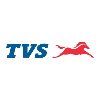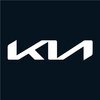
Tata Motors
Proud winner of ABECA 2024 - AmbitionBox Employee Choice Awards
Filter interviews by
Tata Motors Safety Manager Interview Questions and Answers
Tata Motors Safety Manager Interview Experiences
1 interview found
I appeared for an interview before Jun 2023.
(2 Questions)
- Q1. What is BBS and how it influence the behaviour
- Ans.
BBS stands for Behavior-Based Safety, a systematic approach to improving safety by focusing on behaviors that can lead to accidents.
BBS involves observing and analyzing employee behaviors to identify potential safety risks
It aims to change behaviors through positive reinforcement and feedback
Examples include implementing safety training programs, conducting safety audits, and providing incentives for safe behavior
- Q2. Technological advancements done the risk reduction at your company
Interview Preparation Tips
Top trending discussions






Interview questions from similar companies

I applied via Campus Placement and was interviewed before Aug 2020. There were 3 interview rounds.
Interview Questionnaire
1 Question
- Q1. It was technial and some hr questions
Interview Preparation Tips
So whatever you have done worked get completed hold on it.

Interview Questionnaire
4 Questions
- Q1. Tell us something about your self, summer inetrnship, family etc. ?
- Ans.
I am a hardworking individual with a passion for learning and growth. I completed a summer internship in marketing and come from a supportive family.
I am a hardworking individual
Passionate about learning and growth
Completed a summer internship in marketing
Come from a supportive family
- Q2. Demonstrate how will you retain an employee at your dealer's?
- Q3. Are you comfortable with working in different city and travelling?
- Ans.
Yes, I am comfortable with working in different cities and travelling.
I have previous experience working in different cities and travelling for work.
I am adaptable and can quickly adjust to new environments.
I enjoy exploring new places and meeting new people.
I understand the importance of being flexible and available for work-related travel.
I am willing to make necessary arrangements to ensure smooth travel and work ex
- Q4. Why did you enter the GD late?
- Ans.
I apologize for being late. I had an emergency that I had to attend to.
I had an unexpected emergency that required my immediate attention
I made sure to inform the organizers as soon as I could
I understand the importance of punctuality and will ensure it in the future
Interview Preparation Tips
Experience: Its a simple test to check your people skills, your personality and whether you are capable to handle difficult situations
Tips: Its very simple, no need to worry abt it. Everyone clears this one.
Round: Group Discussion
Experience: The GD took place on 12th feb and so the topic was very recent. Everybody had abundant data and thus plenty of points to make. It was a well structured GD, 10 minutes to discuss and 5 minutes to individually conclude the topic. I made my first point pretty late which was a wrong thing to do as I was asked about this in my interview. Later on I was successful to put 3-4 distinct points and as I was 8th amongst 10 ppl I could structure my conclusion well.
Tips: 1. Please read about the recent topics in newspaper.2.Numbers aren't important they don't make much difference. 3. If you are applying for marketing/sales job be presentable, improve your diction and grammar. 4.Make distinct points.
Duration: 15 minutes
Round: HR Interview
Experience: The HRs were very calm and poised, they gave me enough time to frame my answers. Overall it was a pleasant experience.
Tips: Be yourself and show that you need this job. Show that you come from a family which is supportive and that you are flexible when it comes to location.
College Name: KJ SOMAIYA INSTITUTE OF MANAGEMENT STUDIES AND RESEARCH

I applied via Referral and was interviewed before Sep 2017. There were 2 interview rounds.
Interview Preparation Tips
Experience: I got confirmation from HR at December, but they gave letter in march month, day by day I have to call them and follow for the offer letter, They gave offer letter after 3 months, but ask me to join within one month.
General Tips: Please dont prefer to work in Mahindra and dont spoil your carrier.
Duration: 1-3 Months

I applied via Naukri.com and was interviewed before Mar 2021. There was 1 interview round.
(1 Question)
- Q1. Tell me about yourself
Interview Preparation Tips

I applied via Recruitment Consultant and was interviewed before Nov 2020. There were 3 interview rounds.
Interview Questionnaire
1 Question
- Q1. Always asked Technical questions...like New projects, Improvement, Innovation, Quality,Cost savings & Productivity related
Interview Preparation Tips
Mahindra is also wants a great learner.

I applied via Recruitment Consulltant and was interviewed before Jul 2021. There was 1 interview round.
(2 Questions)
- Q1. Know about gd&t and application
- Q2. What is your responsibility to current organization
Interview Preparation Tips

Assistant Manager Interview Questions & Answers
Hyundai Motor India Limitedposted on 25 Nov 2021
I applied via Campus Placement and was interviewed before Nov 2020. There were 7 interview rounds.
Interview Questionnaire
1 Question
- Q1. Question include about automobile parts and principles in technical interview and situation based questions in HR interview
Interview Preparation Tips
1. Aptitude / verbal test
2. Group Discussion
3. PowerPoint presentation
4. Technical interview
5. HR interview
6. Stress management ( optional)
1. APTITUDE:
Questions will be generally from Amcat, which would be easy to crack. It is recommended to have a basic knowledge on all the formulas used to quickly solve the questions to keep up with time
2. GROUP DISCUSSION:
Initiate the discussion and give them the invigilators the opinion that you are confident and bold enough and you are good to go.
3. POWERPOINT PRESENTATION:
Explain about oneself in 4 slides. It should not include anything related to your academics. Include SWOT in your presentation.
4. TECHNICAL INTERVIEW:
a. Be strong with the basics of automobile parts and principles.
b. One should have good command over the areas of interest mentioned in the resume.
5. HR interview:
Again be honest and don't twist the words. Be confident and voice out your decision making skills when you are given a situation based question, which the HRs often do.
This would be enough for you to crack the interview.
In Simple words it would be challenging.

Interview Questionnaire
1 Question
- Q1. Wt is your goal in your life?

I applied via Campus Placement and was interviewed before Jun 2021. There were 2 interview rounds.
Basic aptitude test, with basic knowledge of all your domain subjects.
If you are preparing for gate then it will be easy to clear for you.
(5 Questions)
- Q1. Tell me something about yourself.
- Q2. What makes you different from others.
- Q3. Give a practical example of cantilever beam.
- Ans.
A cantilever beam is a beam that is supported at only one end and carries a load at the other end.
A diving board is a practical example of a cantilever beam.
A shelf attached to a wall with brackets is another example.
A flagpole is also a cantilever beam.
Cantilever bridges are another example of cantilever beams.
Cantilever beams are used in construction to support balconies and overhangs.
- Q4. Why do you want to join this organisation?
- Q5. Some questions about my past internships and my projects.
Interview Preparation Tips
All the best👍
Tata Motors Interview FAQs
Tell us how to improve this page.
Tata Motors Interviews By Designations
- Tata Motors Senior Manager Interview Questions
- Tata Motors Graduate Engineer Trainee (Get) Interview Questions
- Tata Motors Mechanical Engineer Interview Questions
- Tata Motors Quality Engineer Interview Questions
- Tata Motors Territory Sales Manager Interview Questions
- Tata Motors Design Engineer Interview Questions
- Tata Motors Sales Executive Interview Questions
- Tata Motors Assistant Manager Interview Questions
- Show more
Interview Questions for Popular Designations
- Safety Engineer Interview Questions
- Senior Safety Officer Interview Questions
- Senior Safety Engineer Interview Questions
- Safety Officer Interview Questions
- Fire & Safety Officer Interview Questions
- Safety Supervisor Interview Questions
- Fire & Safety Supervisor Interview Questions
- Senior Safety Supervisor Interview Questions
- Show more
Tata Motors Safety Manager Interview Process
based on 1 interview
Interview experience
Interview Questions from Similar Companies
Fast track your campus placements
Tata Motors Safety Manager Reviews and Ratings
based on 2 reviews
Rating in categories
|
Senior Manager
6.3k
salaries
| ₹7 L/yr - ₹28.4 L/yr |
|
Deputy General Manager
840
salaries
| ₹18 L/yr - ₹48 L/yr |
|
Executive
817
salaries
| ₹2.4 L/yr - ₹12.2 L/yr |
|
Sales Executive
440
salaries
| ₹0.8 L/yr - ₹6 L/yr |
|
Territory Sales Manager
433
salaries
| ₹7.3 L/yr - ₹27 L/yr |

Maruti Suzuki

Mahindra & Mahindra

Mercedes-Benz Research and Development India

TVS Motor
- Home >
- Interviews >
- Tata Motors Interview Questions >
- Tata Motors Safety Manager Interview Questions



















